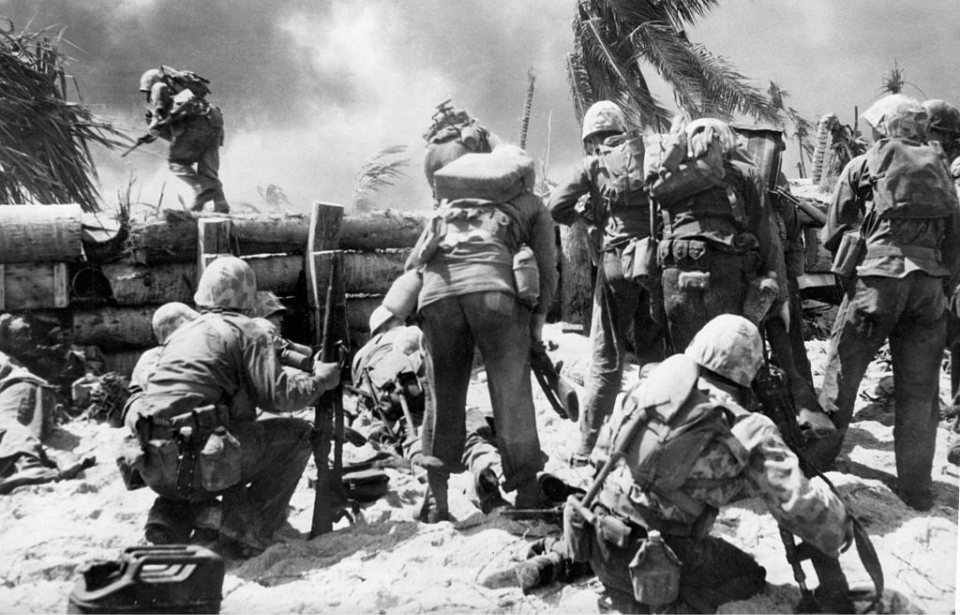Between November 20-23, 1943, 35,000 American troops secured Betio island, part of Tarawa Atoll. This was an impressive feat, as the Japanese had anticipated it would to take one million men 100 years to do. The Battle of Tarawa was the first American offensive in the Central Pacific and was the first time the Japanese had opposed an amphibious landing by US forces. Lasting four days, it taught the US military lessons that proved crucial to ensuring the success of future landings.
Betio island and the American strategy
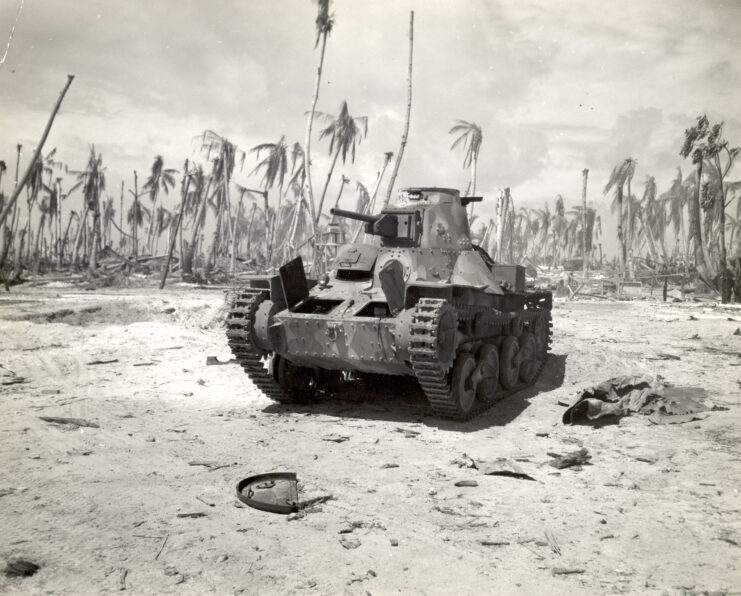
Located 2,400 miles southwest of Pearl Harbor, the small island of Betio played an important role in the American strategic plan in the Pacific during the Second World War. The United States, as part of its “island-hopping” campaign, needed to set up bases in the Marianas to support operations across the area, as well as in the Philippines and Japan. According to naval doctrine at the time, however, land-based aircraft were needed to protect the invasion forces and weaken enemy defenses.
The Marshall Islands were determined to be the closest land masses capable of providing an air base from which such an offensive could be launched. There was just one problem: they were cut off from direct communication with Hawaii by a Japanese garrison and air base on Betio, in the Tarawa Atoll. As such, to secure the Mariana Islands, it first needed to be taken.
The Japanese forces fortified the coast of Tarawa
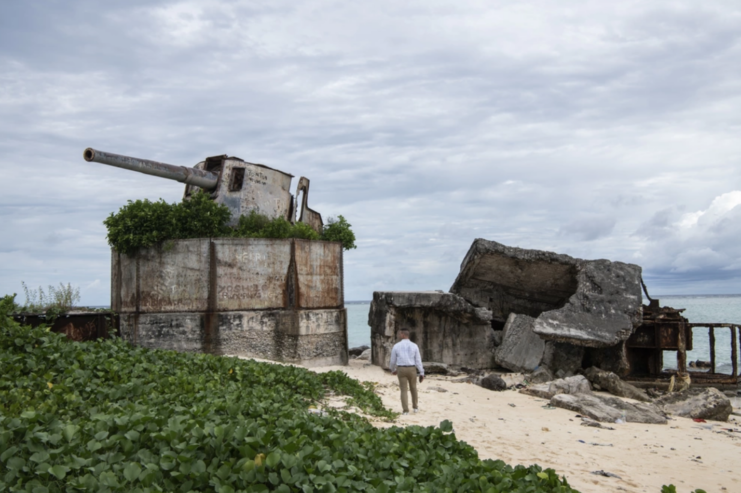
It wouldn’t be a simple invasion. In February 1943, the Japanese 3rd Special Base Defense Force (previously the 6th Yokosuka Special Naval Landing Force) reinforced Betio. The garrison stationed on the island comprised Imperial Japanese Navy (IJN) troops; the 3rd Special Base Defence Force was 1,112 men strong and was reinforced by the 7th Sasebo Special Naval Landing Force, consisting of 1,497 men and commanded by Cmdr. Takeo Sugai.
Under the command of Rear Adm. Tomonari Saichirō, the Defense Force began constructing sophisticated defensive structures on Betio. The goal of the scheme was to halt any invasions by stopping attackers in the water or pinning them on the beaches.
It took 1,247 men of the 111th Pioneers and 970 men of the Fourth Fleet’s construction battalion almost an entire year to fortify the island, during which time they constructed 500 pillboxes and 40 artillery pieces along the beaches. On top of this, 14 coastal defense guns were prepped, including massive BL 8-inch howitzers that had been purchased from the British in the early 1900s.
The battalion cut an airfield into the center of Betio and dug trenches that connected all parts of the island, allowing troops to move to where they were needed. However, the Japanese didn’t anticipate much fighting in the interior.
Rear Adm. Keiji Shibazaki, an experienced combat officer, took over on July 20, 1943, in anticipation of the coming fight, and preparations continued until the day of the invasion that November.
The Americans assembled a large landing force
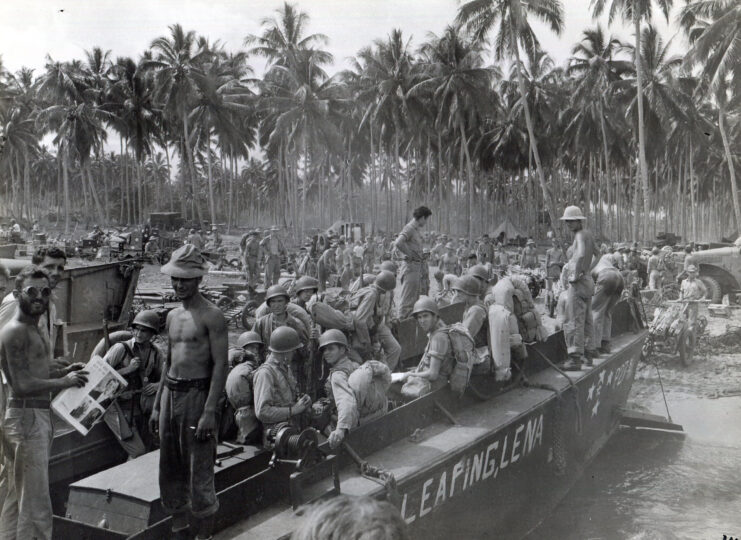
Following the completion of the Guadalcanal Campaign in February 1943, the 2nd Marine Division withdrew to New Zealand to replace their losses. On July 20, the Joint Chiefs of Staff, led by Adm. Chester Nimitz, began preparing for an offensive in the Gilbert Islands. Adm. Raymond A. Spruance flew to New Zealand to meet with Gen. Julian C. Smith, the new commander of the division, to begin planning the invasion.
The American plan was to land Marines on the north beaches, which were divided into three sections: Red Beach 1 on the far west; Red Beach 2 in the center, west of the pier; and Red Beach 3 to the east. Green Beach was a contingency landing on the western shoreline, while the two Black Beaches weren’t used.
This was opposite to what the Japanese had anticipated. They’d thought the coastal guns placed to the north to protect the lagoon would make it too hard for forces to attack from that area. For the Marines, the goal was to secure the airstrip, which divided the island into north and south.
At the time, the American invasion force assembled on the Gilbert Islands was the largest ever gathered for a single operation in the Pacific. They consisted of 17 aircraft carriers, 12 battleships, eight heavy cruisers, four light cruisers, 66 destroyers and 36 transport ships. Around 35,000 men from the 2nd Marine and the US Army’s 27th Infantry Divisions were aboard the transports.
The Battle of Tarawa begins
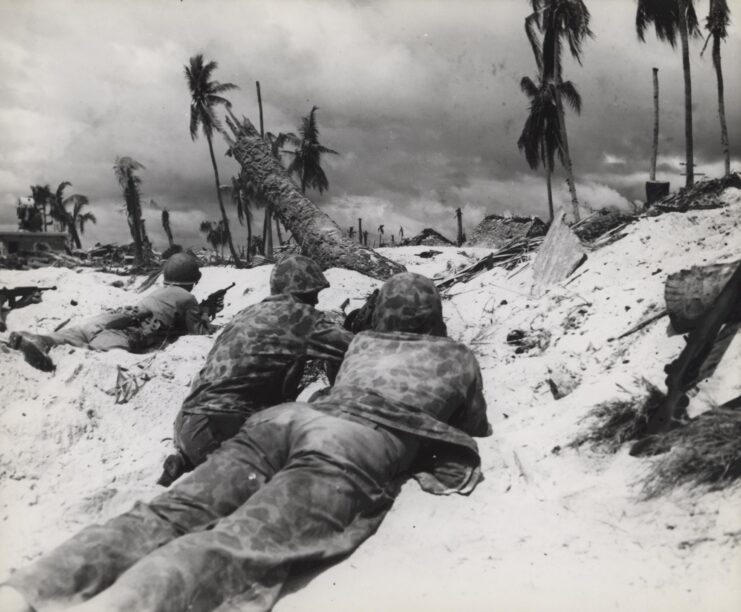
The Battle of Tarawa began in the predawn hours of November 20, 1943, as the island’s coastal guns and the main batteries aboard the American battleships USS Colorado (BB-45) and Maryland (BB-46) engaged in counter-battery fire to the north. These were able to knock out three of the four guns rather quickly, and the resulting damage left the lagoon open.
The following naval bombardment of the beach at 6:10 AM lasted for the next three hours. Once complete, the US Marines began attacking from the lagoon. However, as the tide hadn’t risen as expected over the reefs below, their shallow draft Higgins boats were unable to clear the lagoon. The Marine Corps had been warned by a New Zealand Army Liaison Officer that there was a 50 percent chance that the tide wouldn’t rise, yet the attack hadn’t been delayed.
The US forces’ inability to land their Higgins boats meant the vessels had to be abandoned and those aboard were forced to wade through the deep water to shore. Not only did this leave them vulnerable to enemy fire and cause the landing to take longer than anticipated, but their equipment also became waterlogged.
This had disastrous consequences, as it allowed the Japanese to recover and call up additional troops from the southern beaches, and the Marines who’d managed to make it ashore wound up pinned behind a sea wall. By the end of the first day, the Americans had struggled to secure a small beachhead and the extreme western tip of the island, with the Marines, in particular, seeing 1,500 casualties – 30 percent of those sent ashore that day.
Slowly defeating the Japanese on Betio island
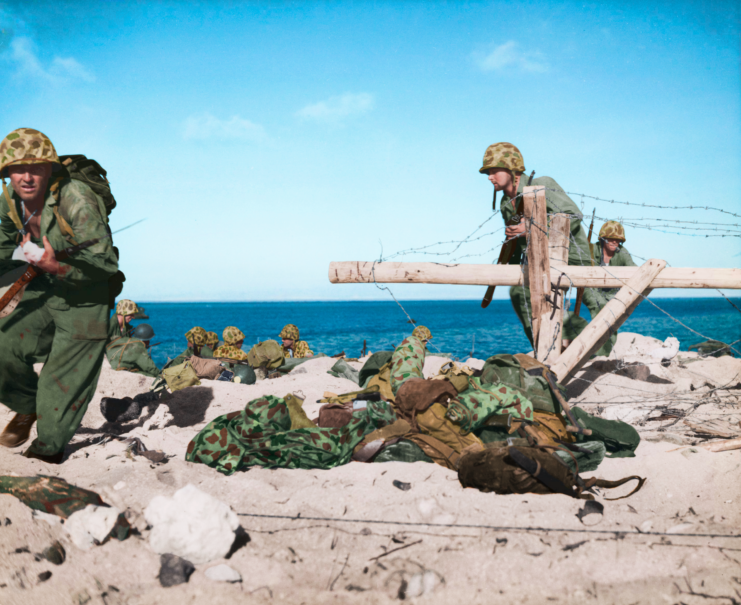
On the second day, the US forces continued to work inland toward the airstrip, with the goal of securing the beaches. The Marines had greater success landing on the western Green Beach, where they quickly secured the beachhead, despite heavy fire from the troops stationed in the pillboxes. Similar resistance was met and neutralized on the Red Beaches, with the Americans controlling the entire western side of Betio by the end of November 21, 1943.
The third day saw the Marines advance east, and they moved heavy equipment and tanks ashore on the Green Beach. As well, the forces that had originally landed on the northern beach made progress toward Red Beach 2, but took casualties in the process.
By the afternoon, the 1st Battalion, 6th Marine Regiment, who’d landed on Green Beach, began the offensive. They pressed the Japanese along the southern coast and formed a contentious line with the men who had landed on Red Beach 3, on the eastern end of the airfield.
Later that night, the Japanese forces formed up for a counterattack. The assault began at 7:30 PM, but the assembling forces were broken up by concentrated artillery fire, thereby thwarting the enemy’s efforts.
American victory over the Japanese
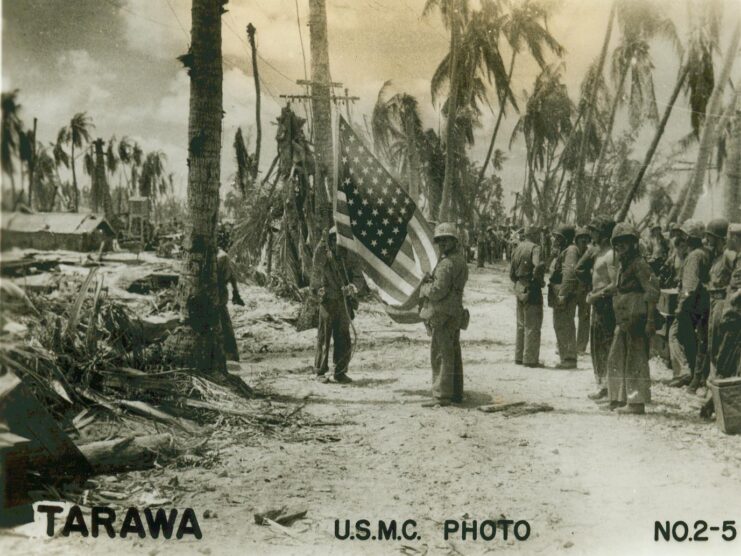
At 3:00 AM on November 23, 1943, the Japanese launched a banzai charge, which the US Marines countered. While they were able to take out 325 attackers, they suffered their fair share of casualties, with 128 injured and 45 killed. Another banzai attack occurred later that morning, which was also subdued.
At 7:00 AM, US Navy fighters and dive bombers launched an assault on the Japanese position at the eastern tip of Betio, with an emphasis on naval bombardments. This continued into the early afternoon, and after major shelling, the Americans were able to eliminate any remaining Japanese resistance, officially ending the Battle of Tarawa.
In the end, they’d suffered over 3,100 casualties, while they’d inflicted over 4,600 on the Japanese – almost their entire force. While the American forces had been successful in their objective, the high casualty total for what many viewed as a less-than-important island in the grand scheme of the fighting taking place in the Pacific Theater.
Legacy of the Battle of Tarawa
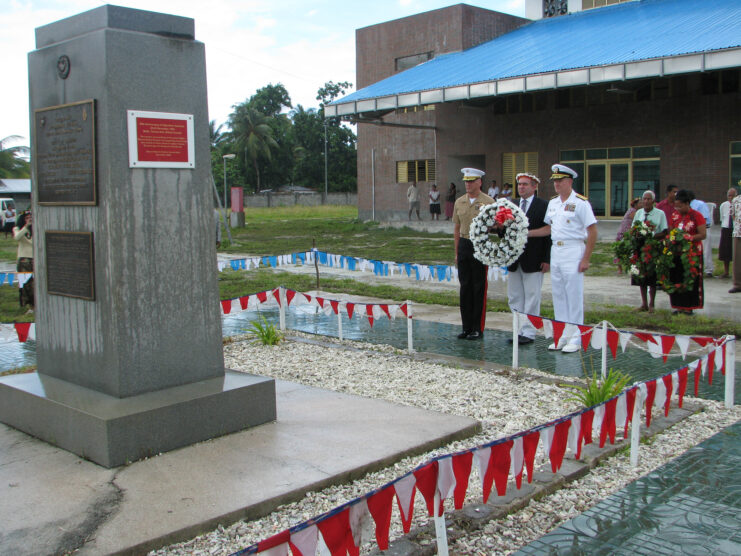
Much was learned from the Battle of Tarawa, given it was the first time the Americans had experienced any real resistance during an amphibious landing. This not only highlighted the challenges of such opposition, but it also changed the way in which landings like this were conducted.
More from us: The Real-Life US Marines Behind the Characters of ‘The Pacific’
Two changes of note were the addition of armor-piercing shells, given the lack of effectiveness of explosive ones in damaging the Japanese troops’ strongholds, and the creation of Underwater Demolition Teams (UDTs) – the precursors to the US Navy SEALs. Nine teams were established soon after, consisting of 150 enlisted men and 30 officers.
